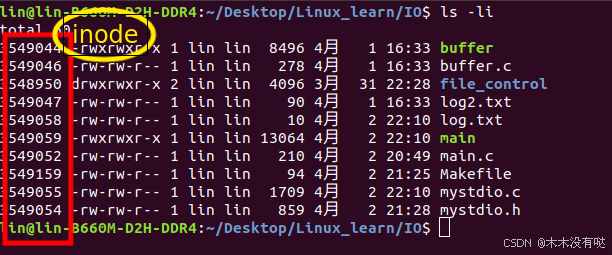代码随想录–图论部分
day 62 图论第十一天(完结)
文章目录
- 代码随想录–图论部分
- 一、卡码网97--小明逛公园
- 二、卡码网126--骑士的攻击
- 总结
一、卡码网97–小明逛公园
代码随想录题目链接:代码随想录
给定一个公园景点图,图中有 N 个景点(编号为 1 到 N),以及 M 条双向道路连接着这些景点。每条道路上行走的距离都是已知的。
小明有 Q 个观景计划,每个计划都有一个起点 start 和一个终点 end,表示他想从景点 start 前往景点 end。由于小明希望节省体力,他想知道每个观景计划中从起点到终点的最短路径长度。 请你帮助小明计算出每个观景计划的最短路径长度。
本题是Floyd算法的应用,解决的是多源最短路问题
也就是求多个起点多个终点的多条最短路径,实际上还是动态规划问题
代码如下:
#include <iostream>
#include <vector>
#include <list>
using namespace std;
int main() {
int n, m, p1, p2, val;
cin >> n >> m;
vector<vector<vector<int>>> grid(n + 1, vector<vector<int>>(n + 1, vector<int>(n + 1, 10005))); // 因为边的最大距离是10^4
for(int i = 0; i < m; i++){
cin >> p1 >> p2 >> val;
grid[p1][p2][0] = val;
grid[p2][p1][0] = val; // 注意这里是双向图
}
// 开始 floyd
for (int k = 1; k <= n; k++) {
for (int i = 1; i <= n; i++) {
for (int j = 1; j <= n; j++) {
grid[i][j][k] = min(grid[i][j][k-1], grid[i][k][k-1] + grid[k][j][k-1]);
}
}
}
// 输出结果
int z, start, end;
cin >> z;
while (z--) {
cin >> start >> end;
if (grid[start][end][n] == 10005) cout << -1 << endl;
else cout << grid[start][end][n] << endl;
}
}
二、卡码网126–骑士的攻击
代码随想录题目链接:代码随想录
在象棋中,马和象的移动规则分别是“马走日”和“象走田”。现给定骑士的起始坐标和目标坐标,要求根据骑士的移动规则,计算从起点到达目标点所需的最短步数。
也就是A*算法,实际上就是广度优先搜索不再是一圈一圈盲目地搜索,而是加上启发式算法来确定搜索方向
代码如下:
#include<iostream>
#include<queue>
#include<string.h>
using namespace std;
int moves[1001][1001];
int dir[8][2]={-2,-1,-2,1,-1,2,1,2,2,1,2,-1,1,-2,-1,-2};
int b1, b2;
// F = G + H
// G = 从起点到该节点路径消耗
// H = 该节点到终点的预估消耗
struct Knight{
int x,y;
int g,h,f;
bool operator < (const Knight & k) const{ // 重载运算符, 从小到大排序
return k.f < f;
}
};
priority_queue<Knight> que;
int Heuristic(const Knight& k) { // 欧拉距离
return (k.x - b1) * (k.x - b1) + (k.y - b2) * (k.y - b2); // 统一不开根号,这样可以提高精度
}
void astar(const Knight& k)
{
Knight cur, next;
que.push(k);
while(!que.empty())
{
cur=que.top(); que.pop();
if(cur.x == b1 && cur.y == b2)
break;
for(int i = 0; i < 8; i++)
{
next.x = cur.x + dir[i][0];
next.y = cur.y + dir[i][1];
if(next.x < 1 || next.x > 1000 || next.y < 1 || next.y > 1000)
continue;
if(!moves[next.x][next.y])
{
moves[next.x][next.y] = moves[cur.x][cur.y] + 1;
// 开始计算F
next.g = cur.g + 5; // 统一不开根号,这样可以提高精度,马走日,1 * 1 + 2 * 2 = 5
next.h = Heuristic(next);
next.f = next.g + next.h;
que.push(next);
}
}
}
}
int main()
{
int n, a1, a2;
cin >> n;
while (n--) {
cin >> a1 >> a2 >> b1 >> b2;
memset(moves,0,sizeof(moves));
Knight start;
start.x = a1;
start.y = a2;
start.g = 0;
start.h = Heuristic(start);
start.f = start.g + start.h;
astar(start);
while(!que.empty()) que.pop(); // 队列清空
cout << moves[b1][b2] << endl;
}
return 0;
}
总结
关于最短路径问题,基本可以依照下图来确定算法

图论的总结在:这里
一刷结束,开始二刷巩固了








![NSSCTF练习记录:[SWPUCTF 2021 新生赛]ez_caesar](https://i-blog.csdnimg.cn/direct/928af8b76e3143c8946be8e8e5d4165f.png)





![[Spring] Spring原理(SpringBoot完结)](https://i-blog.csdnimg.cn/direct/1c7cb850baa94e748c91a03f26fb0b48.png)




